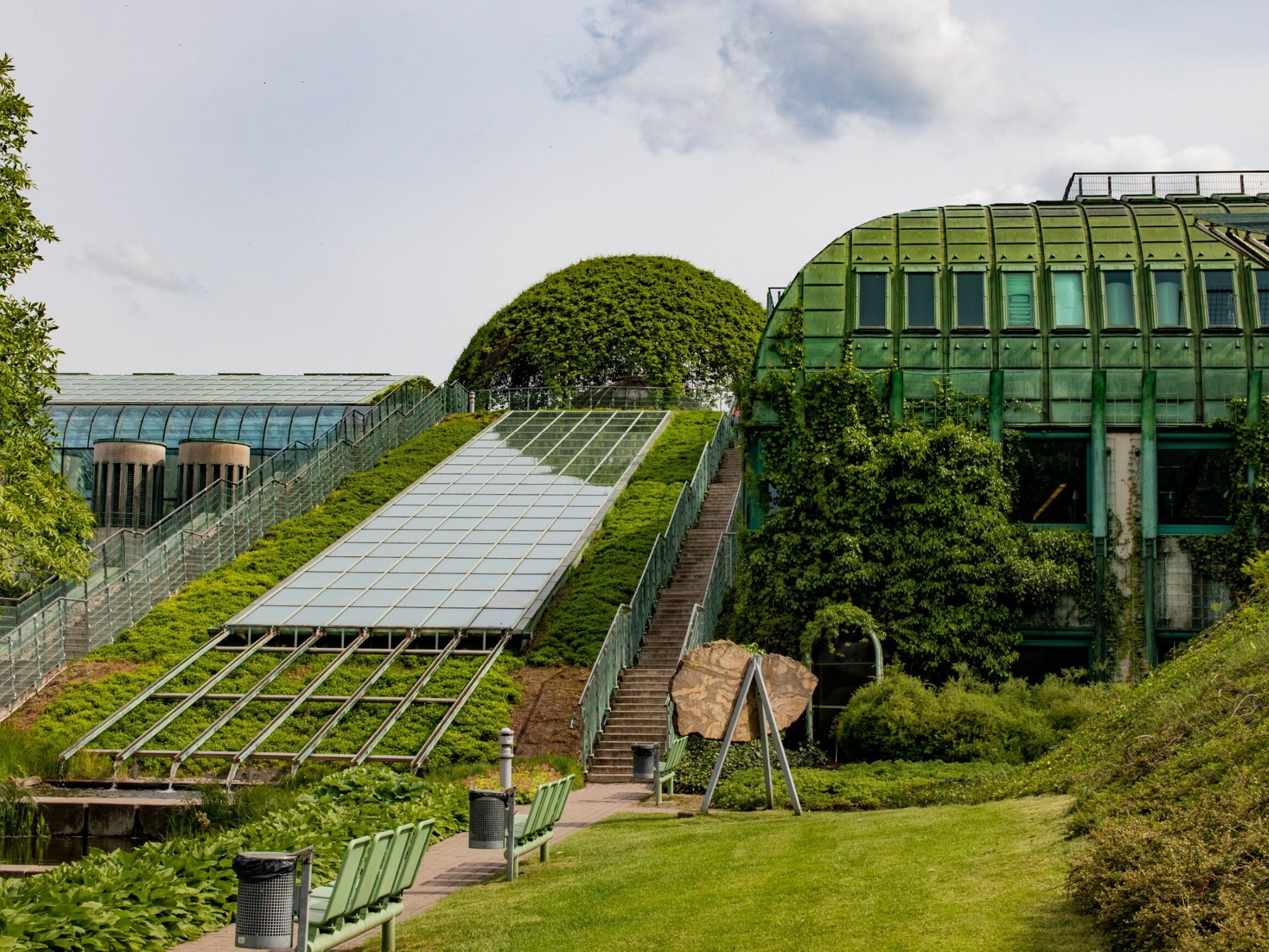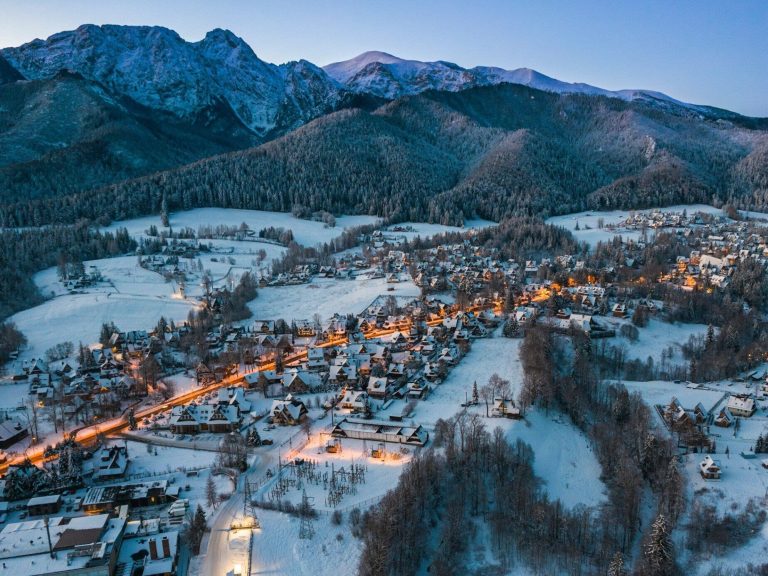Polish cities at risk of climate catastrophe. We have a “great ally” in the fight against its effects

It is difficult to find a patch of shade in concrete squares. Nights bring no respite because heated surfaces release heat. After several days of heat, a violent storm and downpour arrives, during which the streets turn into raging streams. The number and intensity of extreme weather events in cities are increasing. It becomes necessary to adapt them to the effects of climate change.
“In cities, the concentration of negative effects of climate change, including the increase in the intensification of weather extremes, is extremely alarming. More than half of the world’s population already lives in cities,” warn experts from the Polish Academy of Sciences in the publication “Cities and their inhabitants facing the challenges of adaptation to climate change”.
According to UN estimates, in 1950, 30 percent lived in cities. population, currently it is 55%, and by 2050 the percentage will increase to 68%. In Poland, the percentage of people who decided to live in cities is already high. According to the last National Census in 2021, urban residents constituted 59.9%. the total population of the country.
Cities are facing a climate catastrophe
Scientists from the Polish Academy of Sciences indicate that “urbanized areas, their economic, energy and transport systems are extremely sensitive, and unfavorable weather phenomena may have a domino effect that threatens their functioning.” “Cities and their inhabitants are facing a climate catastrophe. The threat is very real,” they warn. In their opinion, “it should be looked at as a challenge that requires urgent systemic actions and ongoing interventions.”
Climate journalist Szymon Bujalski points out that “although not every place in the world the symptoms are noticeable to the same extent, they are starting to get worse everywhere.” “The quality of our life is worsened not only by polluted air, streets taken over by cars and ubiquitous concrete, which at the same time contribute to the intensification of climate change or the impact of its consequences. Urban flash floods and heat waves are also becoming more and more frequent and a greater threat, i.e. one of the most serious consequences of the global climate crisis from a purely Polish perspective,” he enumerates in the book “Recipe for a Better Climate. Healthier cities for a sick world.
More rain in an hour than in a month
We saw a foretaste of what may soon become everyday life in cities three years ago in Warsaw. At the end of June 2020, a powerful storm broke out over the capital. There was so much rain that the city actually came to a standstill. Streets were flooded, including: Wisłostrada, as well as the basements of the hospital and three ministries. It was necessary to close the metro station because water began to enter the platform. Several traffic lights were damaged.
“The rainfall recorded that day, which amounted to 53 liters per square meter, is classified as torrential rain. No sewage system can absorb such an amount of rainfall, with such great intensity, without causing stagnation or flooding,” the capital’s city hall explained at the time.
A year later, also in June, a violent storm and heavy rain hit Poznań. Within several dozen minutes, 64 liters of water fell per square meter, which is more than the average for the entire month. Stations, hospitals, the airport, the zoo, the heat and power plant, streets and basements of residential buildings were flooded. In the Pod Lipami housing estate, the roof of the sports hall next to the school collapsed. In turn, in the Wilczy Młyn housing estate, feces were washed out of toilets and shower trays along with the water.
Only in the last month, Rabka-Zdrój and Jelenia Góra, among others, had to deal with the effects of torrential rains and flash floods.
Scrambled eggs fried at the market
In turn, the effects of “concreteosis” were clearly demonstrated by an experiment conducted in June 2021 on the market square in Krzeszowice. A 19-year-old resident placed a frying pan on the stove and cracked eggs into it. 80 minutes later the scrambled eggs were ready. The temperature in the treeless square was so high that the dish was prepared without the use of fire, electricity or gas.
However, the market square in Krzeszowice is no exception. In recent years, there have been many “revitalizations” of markets and squares, which came down to cutting down the greenery there and pouring concrete in its place.
Nature is our ally
So how can we make cities more resistant to climate change and its consequences less noticeable to residents? Scientists from the Polish Academy of Sciences point out that “in the fight against the effects of rising temperature on Earth and all the often dramatic consequences associated with it, we have a great ally.” “It is nature,” they explain.
According to estimates, one tree absorbs on average 750 kg of carbon dioxide during its life, and a 25 m high tree removes as much carbon dioxide from its surroundings during the day as two single-family houses emit. “Nature also acts as a natural barrier in the event of extreme weather phenomena, protects people, animals and infrastructure against the effects of strong winds or floods, and prevents landslides during heavy rainfall,” they explain.
According to experts, there are many opportunities in cities to use nature as an effective tool in adapting to climate change. “Our cities should become, to a large extent, gardens and start behaving like sponges, retaining water rather than getting rid of it quickly,” explain scientists from the Polish Academy of Sciences.
Plant greenery, break concrete
What specific solutions are these? For example, dismantling concrete installations in every possible place. A good example, although achieved thanks to the determination and commitment of the residents and the reluctant approach of the office, is the paving of Stalowa Street in Warsaw’s Praga district, along which acacia trees grow. Replacing the slabs with lawns and flower beds significantly increased the chances of survival of the trees, which had already started to dry out.
But the list of possibilities is much longer. The experts’ proposals include: using permeable surfaces instead of asphalt or paving stones, planting hedges instead of building concrete fences, and limiting mowing of meadows to the necessary minimum in places where it is necessary for safety reasons. It is desirable to create pocket parks, vertical gardens and green roofs.
Such solutions are not only a way for cities to adapt to climate change, but also simply please the eye. Moreover, additional green spaces are created where residents can relax. The network of pocket parks is being expanded in several places, including in Krakow. Examples of the implementation of several or a dozen green stops can be found in Kalisz, Poznań, Warsaw, Siemiatycze and Białystok.
In turn, one of the most spectacular examples of green infrastructure is the garden on the roof of the University of Warsaw Library. The area of 2,000 square meters, located 16 meters above the ground, is covered with various plants. The place is open to the public and you can admire the panorama of Warsaw from there.
What else? PAN experts encourage the creation of community gardens in cities, establishing flower meadows, creating green zones around schools, establishing vegetable gardens on the roofs of buildings, planting trees in streets, raking leaves only in places that require it for safety reasons, and leaving zones in every park and garden. “wild” nature.
“Planting Rain”
In turn, urban activist Jan Mencwel in the book “Hydrozagadka. “Who takes Polish water and how to get it back” calls for “planting rain”, i.e. “keeping it as close as possible to the place where it falls.” “This will help protect us against floods and weaken drought at the same time,” he explains. By applying appropriate measures, it is possible to stop heavy rains on trees, bushes and in the soil before they spread and cause damage, and what the plants cannot capture will spill out here and there in the form of small pools.
Gdańsk has been investing in rain gardens for several years. The city indicates that they absorb up to 40% of rainwater. better than a classic lawn. Some projects consist of simply creating basins on the street, others simply look like small parks. The appropriate selection of plants plays a key role.
Meanwhile, experts from the Urban Policy Observatory, in their report on the state of Polish cities “Environment and adaptation to climate change”, praise Bydgoszcz for its exemplary approach to rainwater. The leading entity in efforts to disseminate modern solutions and develop infrastructure in terms of retention is the local Municipal Waterworks and Sewerage System, which has prepared a comprehensive project for drainage and retention of rainwater. Among other things, “the concept of distributed retention was invented, i.e. simulating what is in nature by building several dozen retention reservoirs with different capacities.” Now the city is taking advantage of the opportunities offered by artificial intelligence. The system based on it will control the operation of retention reservoirs located in the city.
The intelligent system is intended to allow for the collection and storage of as much rainwater as possible without overloading the stormwater drainage system. It will be used, for example, to water urban greenery. – The amount of water in retention reservoirs will be controlled based on three elements. Weather data and numerical weather forecasts will be very important. The actual rainfall data related to the rain gauges that will measure it will also be important. Important elements will be all control and measurement sensors on the tanks themselves, which will tell us about the water increase in the tank, its level, the dynamics of water increase, as well as the potential possibilities of its discharge – explained Prof. in an interview with Radio Pik. Tomasz Andrysiak from the Bydgoszcz University of Technology, who is the creator of the project in the field of artificial intelligence.
Scientists are working on tools
Scientists from the University of Łódź and the European Regional Center for Ecohydrology of the Polish Academy of Sciences, together with nine institutions from abroad, have also been dealing with the methods of functioning and planning of green and blue infrastructure as part of the ENNABLE project for several years.
The project received the “BiodivERsA for Excellence and Impact” award for “developing a comprehensive model of functioning and planning of the so-called blue and green infrastructure (including greenery and water in cities, including green areas, water reservoirs, green roofs, rain gardens) so as to unleash its full potential.” The team also developed new analytical tools to assess the effects of blue and green infrastructure.






